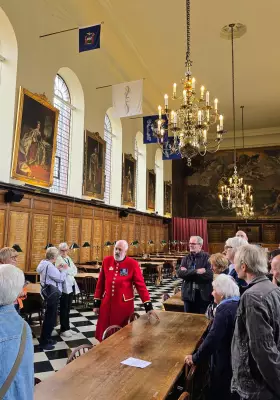
The Moriac Uniting Church has conducted its final service, bringing to a close 162 years of continuous worship and community gathering in the small Victorian town. The historic church, which has been a cornerstone of the local community since 1862, held its last ceremony on Sunday, June 23, marking the end of an era for congregation members and residents alike.
A Century and a Half of Community Service
The church's remarkable journey began during the gold rush era, with its foundation stone laid in 1862 when Moriac was a bustling coaching stop between Geelong and Colac. The building itself was constructed from local bluestone, a testament to the region's distinctive architecture and the dedication of early settlers who built it with their own hands.
Over the decades, the church evolved through several denominations, beginning as a Presbyterian church before becoming part of the Uniting Church in Australia following the 1977 union. Despite these changes, it remained a constant presence in the community, hosting countless weddings, funerals, baptisms, and Sunday services that marked the milestones of generations of local families.
The final service was led by Reverend David Wightman, who has been overseeing the church's operations. Approximately 40 people attended the emotional farewell, including current congregation members and former residents who returned to pay their respects to the institution that had played such an important role in their lives.
Changing Demographics and Declining Congregations
The decision to close the church wasn't made lightly. Like many rural religious institutions across Australia, the Moriac Uniting Church faced significant challenges in recent years. Declining regular attendance had reduced to just four or five people at typical Sunday services, making it increasingly difficult to sustain operations.
This trend reflects broader changes in Australian society, including shifting religious affiliations and the challenges of maintaining community institutions in smaller towns. The demographic changes in Moriac itself, which has transformed from a rural community to something of a commuter town for Geelong, also contributed to changing patterns of community engagement.
Church elder Heather McDonald, who has been attending since the 1970s, expressed the mixed emotions shared by many congregation members. While saddened by the closure, she acknowledged the practical realities that made the decision necessary.
Preserving the Legacy and Building Community
Despite the church building's closure, efforts are underway to ensure its legacy continues to benefit the Moriac community. The church council is exploring options for the building's future use, with preference given to purposes that will continue serving community needs.
Potential new uses for the historic bluestone building include conversion into a community centre, art space, or meeting place that could host various local activities. The church's picturesque setting and historical significance make it a valuable community asset that locals hope will find new life in its next chapter.
The closure process involves careful consideration of the church's assets, including its historic pipe organ and various religious items. Some elements may be transferred to other Uniting Church congregations in the region, while others could be preserved as part of local historical collections.
The final service included a morning tea, providing an opportunity for attendees to share memories and reflect on the church's long history. Former members travelled from as far as Queensland to be present for this significant moment, demonstrating the enduring connections forged within the church's walls.
As the Moriac community looks to the future, the closure of this historic institution represents both an ending and a new beginning. While Sunday services may have ceased, the building's potential transformation offers hope that it will continue to serve as a gathering place for the community, honouring its 162-year legacy while adapting to contemporary needs.





